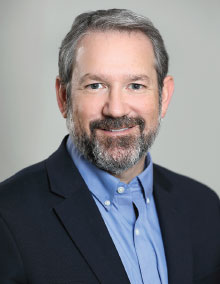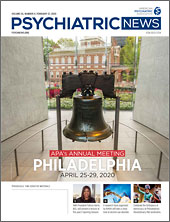The Food and Drug Administration approval of the fast-acting medications esketamine and brexanolone in March 2019 symbolized a significant leap forward in the treatment of major depression, but challenges remain.
“Due to risks associated with each drug, patients can’t simply pick up a prescription for esketamine or brexanolone at their local pharmacy,” said Joshua Gordon, M.D., Ph.D., director of the National Institute of Mental Health (NIMH) in comments submitted to Psychiatric News. Instead, patients must receive the medications under the supervision of a health care professional in a certified medical office.
“The hard work of trying to harness the full potential of these medications and other available treatments continues apace,” Gordon continued. Still, the journey of esketamine and brexanolone offers a compelling tale of how NIMH-supported bench-to-bedside research can advance the understanding of the brain and lead to therapeutic breakthroughs. The story of these drugs, as well as NIMH’s ongoing research efforts in depression, will be a focus of Gordon’s presentation titled “The NIMH: Programs, Priorities, and Plans” at the APA Annual Meeting.
Gordon noted that a research team led by Carlos Zarate, M.D., chief of the NIMH Section on the Neurobiology and Treatment of Mood Disorders and chief of the institute’s Experimental Therapeutics and Pathophysiology Branch, has identified one promising esketamine derivative—the metabolite hydroxynorketamine—that might produce robust antidepressant effects with minimal undesirable symptoms or risk of misuse. Scientists from NIMH, the National Institute on Aging, and the National Center for Advancing Translational Science are getting ready to test this compound in patients with treatment-resistant depression.
NIMH is also supporting research on other modes of treatment for depression such as brain stimulation. As with ketamine and brexanolone, brain stimulation therapies like electroconvulsive therapy (ECT) and transcranial magnetic stimulation (TMS) can provide rapid symptom relief for many patients. Sarah H. Lisanby, M.D., director of NIMH’s Noninvasive Neuromodulation Unit, and colleagues have developed tools to improve the safety and efficacy of these stimulation therapies and have advanced new methods such as magnetic seizure therapy, which has features of both ECT and TMS.
“Today, people who are living with depression have more treatment options available to them than ever before,” said Gordon. “But there is still a long way to go in understanding how to best tailor treatments to each person. Speeding up the treatment selection process could prevent months or even years of debilitating symptoms.”
An active focus of NIMH-supported research, therefore, is to build on the emerging understanding of the heterogeneity of depression so that individuals can receive optimal treatment sooner. Researchers have begun to make use of “big data” and advances in neuroscience to develop algorithms that could help determine which treatment option is best for individual patients. “While a long way off from public use, [using] genetic [information] to match people with the medication is another possible approach that is likely to benefit from ongoing research,” Gordon added.
“Together, these many lines of NIMH-funded research have the potential to produce precision medicine that could change the way we think about and treat depression,” he said. “The road from basic science discoveries to novel therapies may be long and winding, but we already have evidence that it can lead to success.”■
“The NIMH: Programs, Priorities, and Plans” will be held Monday, April 27, from 8 a.m. to 9:30 a.m.

